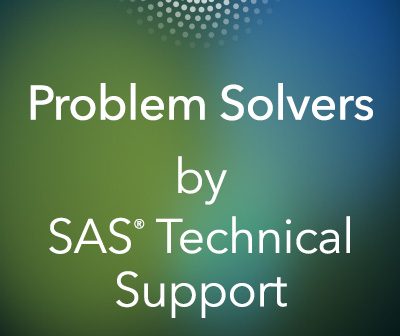
Appending data tables is a common task for data analysis. Here are three of the several methods possible through the SAS Viya platform.

Appending data tables is a common task for data analysis. Here are three of the several methods possible through the SAS Viya platform.

SAS' Kathryn McLawhorn reveals an elegant option to introduce dynamic header data using DATA step logic and the FORMAT procedure.

SAS' Bari Lawhorn introduces you to the MFILE option as a way to home in on errors and warnings in your macros.

SAS' Chevell Parker walks you through eight formatting scenarios that can occur when using ODS Excel and how to address them using formatting and formatting values after export.

SAS' Kevin Russell compares how you order your data with a BY statement in SAS 9.4 versus in CAS using the ADDROWID data set option in SAS Viya.

There are several alternatives to writing to a Microsoft Word file when you use the SAS® Output Delivery System (ODS). The RTF, TAGSETS.RTF and TAGSETS.RTF_SAMPLE destinations create an RTF formatted file. The WORD destination, which is still considered preproduction, creates a DOCX formatted file. The destinations provide many of the same functions, although some features are unique to each one. The destination that you choose might vary depending on your desired final output.

SASPy and the SAS kernel for Jupyter Notebook enable you to connect to SAS® 9.4 and the SAS® Viya® compute server from your client machine. You can then interact with SAS and SAS Viya via Python. If you are not familiar with SASPy and the SAS kernel, this article provides an introduction.

SAS' Bari Lawhorn shows you how to access files you've stored with SAS® Studio.

CAS libraries enable you to access your CAS data. By defining the librefs for those caslibs in SAS Studio, you can have more interactive access to the CAS data.

Have you ever submitted a stored process, and instead of the expected output, you saw errors or no output at all? Depending on how you submit the stored process, various logs are available to assist you with debugging. This article provides guidance for understanding which situations call for which logs, where to find each log, and what you should look for in each log.